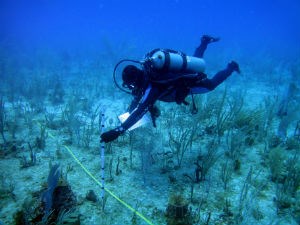|
Virgin Islands National Park provides vital habitat for a number of plants and animals, both terrestrial and marine. Many of the species protected within the park are federally endangered or threatened.
Virgin Islands National Park also protects some of the last remaining tropical dry rain forest in the Caribbean. In 1976, Virgin Islands National Park was one of the first protected areas to receive designation as an International Biosphere Reserve by the United Nations Education, Scientific, and Cultural Organization (UNESCO). It is one of only 30 containing both marine and terrestrial ecosystems. The Virgin Islands have been inhabited for at least 3,000 years. Cultural resources include prehistoric archaeological sites, hundreds of historic structures, offshore shipwrecks, and museum collections that encompass artifacts dating as far back as 840 BC. Through scientific research, park managers are able to make informed decisions to best protect park resources for future generations. Research continues to provide information on the people who have lived here throughout time. University students and other researchers visit Virgin Islands National Park and the surrounding area to conduct studies and gather information throughout the year. Current research projects taking place include:

Please visit the National Park Service Research Permit and Reporting System (RPRS) for information regarding scientific research permits. If you have specific questions pertaining to research projects in Virgin Islands National Park or Virgin Islands Coral Reef National Monument please e-mail or call (340) 693-8950 ext. 225.
|
Last updated: April 12, 2016
